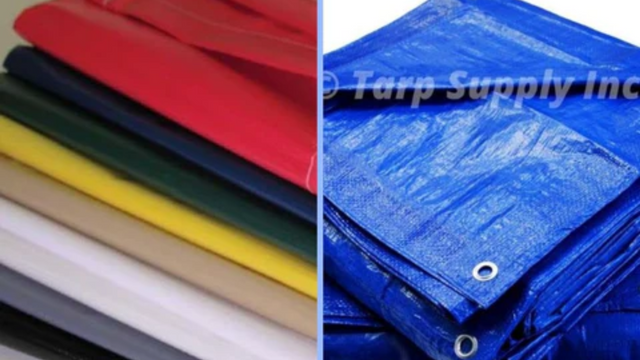Innovative Uses for Waterproof Tarps in Camping, Hiking, and Outdoor Adventures
Introduction
When heading out for a camping trip, hiking expedition, or outdoor adventure, a waterproof tarp can be one of the most versatile and essential pieces of gear. Lightweight, durable, and adaptable, tarps offer protection from the elements and serve a variety of innovative purposes beyond the traditional rain shelter. Whether you're looking to enhance your campsite, create a survival solution, or improve overall comfort in the wild, a high-quality waterproof tarp is a game-changer. Here are some creative and practical ways to use tarps for your next outdoor adventure.
1. Ultra-Lightweight Shelter
For backpackers and minimalist campers, waterproof tarps provide an excellent alternative to traditional tents. With just a few ropes and stakes, you can set up a simple A-frame shelter, lean-to, or even a teepee-style cover that keeps you dry while allowing for ventilation. Unlike bulky tents, tarps are lightweight and pack down small, making them perfect for long-distance hiking or thru-hiking adventures where every ounce counts. Additionally, tarps can serve as quick emergency shelters in case of unexpected weather conditions.
2. Ground Cover and Moisture Barrier
One of the simplest yet most effective uses of a waterproof tarp is as a ground cover under your tent or sleeping bag. Placing a tarp beneath your sleeping area prevents moisture from seeping through, keeping you dry and comfortable. It also acts as a protective barrier against sharp rocks, twigs, and rough terrain, prolonging the life of your tent. If you're hammock camping, laying a tarp underneath can serve as a dry landing spot for your gear or provide a clean area to prepare food.
3. Rainwater Collection System
Waterproof tarps can be used to collect and store rainwater in the wilderness, a valuable resource when camping in remote areas. By suspending the tarp in a concave shape or angling it downward into a container, you can efficiently gather rainwater for drinking, cooking, or cleaning. Pairing this method with a proper filtration system ensures a safe and sustainable water source for extended outdoor trips. This eco-friendly approach can help reduce reliance on bottled water and minimize waste.
4. Portable Hammock or Sleeping Platform
In situations where the ground is too wet, uneven, or unsafe, a heavy-duty waterproof tarp can be transformed into a makeshift hammock or raised sleeping platform. Using strong ropes and secure knots, you can suspend a tarp between trees to create a durable sleeping area. This method keeps you elevated from damp ground, insects, and potential wildlife encounters. Additionally, tarps can serve as windbreaks around your hammock, improving warmth and comfort in colder conditions.
5. DIY Outdoor Kitchen and Firewood Shelter
Cooking in the great outdoors requires some level of protection from wind and rain. A waterproof tarp can be used to construct an overhead cover for your camp kitchen, ensuring you can cook meals comfortably regardless of the weather. Additionally, tarps provide an excellent solution for keeping firewood dry. By wrapping logs or stacking them under a tarp shelter, you can ensure a steady supply of dry wood for fires, which is essential for warmth and cooking in damp conditions.
Conclusion
A waterproof tarp is one of the most valuable and versatile pieces of gear you can bring on any outdoor adventure. From makeshift shelters to rainwater collection, ground protection, and even hammock alternatives, the creative possibilities are endless. By incorporating a tarp into your camping, hiking, or survival kit, you can enhance your outdoor experience while staying prepared for unexpected challenges. Next time you head out into nature, don’t forget to pack a high-quality waterproof tarp—it might just become your most useful piece of gear.
